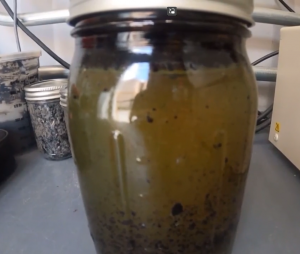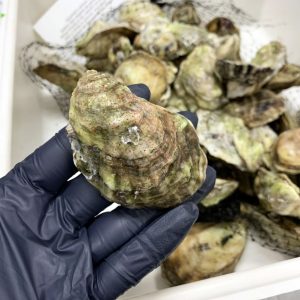While others push for higher water standards
 Florida’s Blue-Green Algae Task Force is questioning its own effectiveness, environmental groups are asking the federal government for stronger water standards in Florida, and community efforts converge to help restore Apalachicola Bay oyster harvests to their former glory. It’s all in this week’s Environmental and Engineering Digest.
Florida’s Blue-Green Algae Task Force is questioning its own effectiveness, environmental groups are asking the federal government for stronger water standards in Florida, and community efforts converge to help restore Apalachicola Bay oyster harvests to their former glory. It’s all in this week’s Environmental and Engineering Digest.

Algae Task Force: Florida has seen quite the flare up of blue-green algae in the last several months, with blooms found in ailing waterways from Lake Toho, to Dead Lake, and even areas of West Palm Beach, despite the best efforts from Governor DeSantis’ Blue-Green Algae Task Force. This has led many to question the efficacy of the practices established under the task force, including a long list of acronyms like Basin Action Management Plans (BMAPS), Total Maximum Daily Load (TMDL), and Best Management Practices (BMPs), which were aimed to help us better manage human impact on the waterways. And now that list includes the task force itself, which met last week to discuss nutrient runoff from farms. “It may be that we don’t meet the TMDL,” said task force member and Florida Gulf Coast University professor Mike Parsons. “It could be we’ve done all we can through BMAPs and practical agriculture practices.” While this dead-end is certainly frustrating, there are new avenues being explored. Just last week, the state signed an agreement with South Korea to share information on fighting blue-green algae.

Federal Water Standards: Late last month a coalition of organizations asked the EPA to step in and set water quality standards for toxins that produce algae blooms in Florida, claiming the state has not adequately addressed the issue. The Center for Biological Diversity (CBD) and other groups are concerned about monitoring levels of “cyanotoxins” in Florida’s waterways, which can cause symptoms ranging from mild rash and irritation to nervous system failure and seriously cripple local economies during blooms. In their petition, the proponents argue that federal standards are necessary to meet the requirements set by the federal Clean Water Act because Florida’s current regulations are too lax. “The state relies on things like nutrient standards or chlorophyll,” said Jason Totoiu, the senior attorney at CBD. “We’re submitting that that’s not enough, because those types of standards aren’t human health based,” he continued, pointing to the dangerous toxins in the water that currently fly under the radar. They’re hopeful with the right understanding, methodology, and data focus, the Sunshine State can help restore its struggling waterways.

Apalachicola Bay Oysters: Apalachicola Bay is another environmentally troubled area, having been ordered by the state in 2020 to close its famous oyster industry because of high salinity levels from decreased water flow in the Apalachicola River that caused the oyster population to plummet. This decision created a rift in the community, banning an age-old practice and asking multigenerational families of fisherman to find work elsewhere. Parts of the community have banded together and produced an “Apalachicola Bay System Ecosystem-Based Adaptive Restoration and Management Plan” with recommendations on how to get the bay back in service. Apalachicola Bay produces almost 90% of Florida’s oysters and 10% of the entire U.S. haul, generating around $134 million in economic output for the region – a lifeline that collapsed with the oyster population back in 2020. The community has held their breath for a long four years and are hoping the oyster population will return by the current expiration of the ban on December 31, 2025.
LMA Newsletter of 6-10-24

